Niacinamide Face Serum
| Phase | Ingredient | Percent (%) | Weight (g) |
|---|---|---|---|
| Phase A | Rose hydrosol (INCI - Rosa damascena distillate, sodium benzoate, potassium sorbate) | 91.2 | 91.2 |
| Hyaluronic acid (high molecular weight (HMW)) | 0.5 | 0.5 | |
| Phase B | Niacinamide | 5.0 | 5 |
| Glycerin | 0.3 | 0.3 | |
| Propanediol (INCI - Trimethylene glycol) | 1.2 | 1.2 | |
| Pentylene glycol | 1.0 | 1 | |
| Phase C | Preservative (INCI - Benzyl Alcohol, Dehydroacetic Acid, Aqua) | 0.8 | 0.8 |
This face serum is inspired by Kiehl's Niacinamide Ultra Pure serum. By examining the ingredients list of Kiehl's Niacinamide Ultra Pure serum, I used similar ingredients to make a serum that contains 5% Niacinamide with a combination of humectants and Hyaluronic acid.
Kiehl's Niacinamide Ultra Pure serum is formulated with only a few ingredients, and the main active ingredient is Niacinamide. When I formulated this Niacinamide serum, I used seven ingredients to achieve a similar product with similar benefits.

You can help support my website and channel through the “buy me a coffee” page.
Here is the link: https://www.buymeacoffee.com/diycosmetica
Your support helps me keep sharing here more information and more formulas.
The active ingredient in this serum is Niacinamide at 5%. Niacinamide, a form of vitamin B3, has been studied for its benefits on the skin, particularly aging skin. These studies have found that applying niacinamide to the skin can help reduce signs of aging, like wrinkles, dark spots, and redness. It works by slowing down the transfer of pigment within the skin, which can help lighten dark spots. Niacinamide also helps the skin deal with stress from sunlight and pollution, which can lead to aging and pigmentation issues. It does this by either directly fighting harmful molecules in the skin or by boosting the skin's own protective systems. Additionally, niacinamide keeps skin cells healthy for longer and has anti-inflammatory effects, which means it can calm the skin. The studies suggest that niacinamide is a good ingredient for skin care products because it has many benefits for skin health and appearance without causing severe side effects.
At the end of the post, you can find links to more information about Niacinamide in cosmetics.
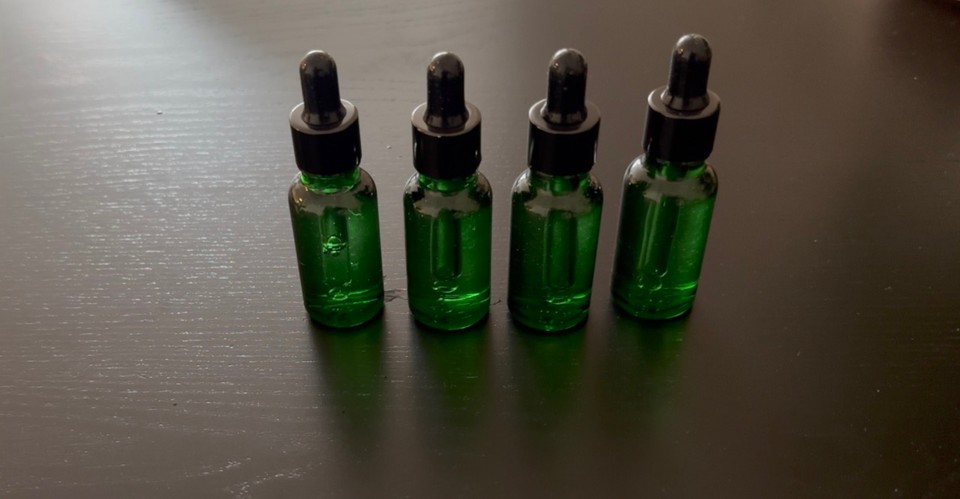
If you like to make dupe products, check out the Clinique rinse off foaming cleanser and the Clinique take the day off cleansing balm.
I used Rose hydrosol, also known as rose water. Rose hydrosol has excellent soothing effects and is perfect for sensitive, irritated, or inflamed skin. It aids in diminishing redness and brings relief to skin under stress. Packed with antioxidants, rose water shields the skin from environmental harms like pollution and UV rays, aiding in the fight against premature aging. Its gentle astringent qualities contribute to skin toning, promoting a firmer complexion and minimizing pore visibility. Additionally, the natural scent of roses is perfect for this face serum. You can replace the rose hydrosol with distilled water.
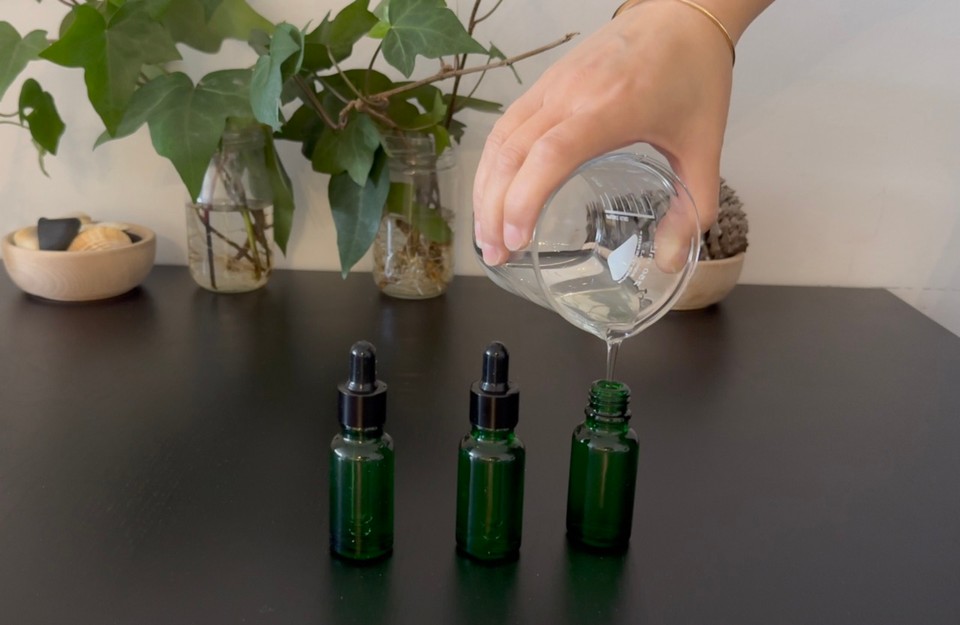
Niacinamide, also known as vitamin B3, is a powerhouse skincare ingredient revered for its multifaceted benefits, particularly when it comes to facial serums. When used at an optimal concentration of 5%, niacinamide can transform the health and appearance of the skin, providing a wide range of benefits, from improving the skin's barrier function to reducing inflammation. The efficacy of a facial serum can be significantly enhanced by incorporating a trio of humectants—glycerin, propanediol, and pentylene glycol—alongside the hyaluronic acid.
At a 5% concentration, niacinamide effectively addresses various skin concerns. It can visibly improve the appearance of enlarged pores, uneven skin tone, and fine lines. Its anti-inflammatory properties make it an excellent choice for sensitive or blemish-prone skin, as it can help regulate oil production and reduce redness. Moreover, niacinamide is a potent antioxidant, protecting skin cells from external stressors such as pollution, toxins, and the sun's ultraviolet rays. This concentration is high enough to be highly effective yet gentle enough to avoid irritation for most skin types.
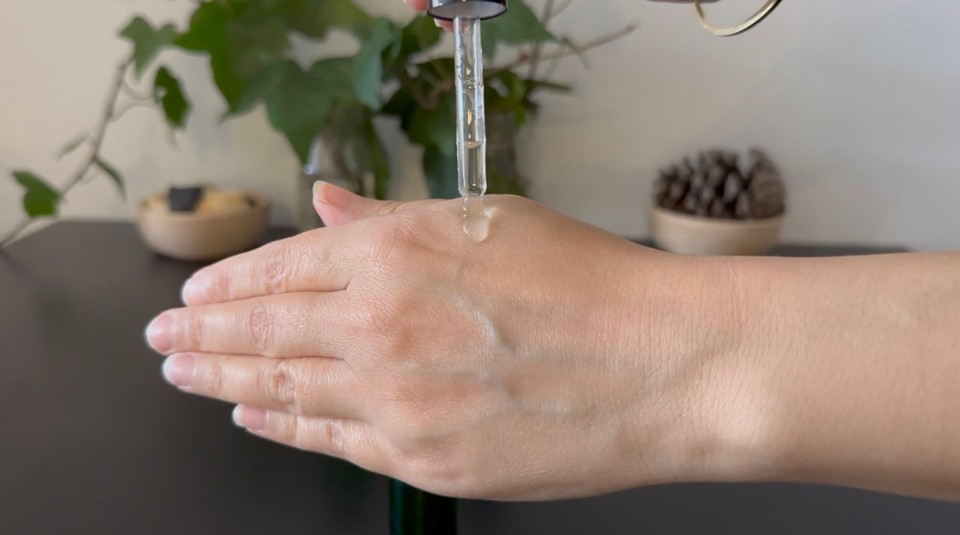
Incorporating a blend of glycerin, propanediol, and pentylene glycol into a serum creates a hydrating powerhouse. Each humectant attracts and retains moisture in a unique way, leading to a more hydrated and plumper complexion.
Glycerin is a humectant, drawing water into the outer layer of the skin from deeper levels of the skin and the air. It fortifies the skin's natural barrier, protecting it from irritants and environmental stressors. Propanediol, derived from corn sugar, enhances the skin's penetration of other ingredients and leaves a smooth, dewy finish without stickiness. It also offers antimicrobial properties, which can help preserve the integrity of a formulation. Pentylene Glycol is another humectant gaining popularity for its ability to provide deep moisturization. It also functions as an emollient, leaving the skin soft to the touch. Additionally, its antimicrobial properties can help extend the serum's shelf life.

Hyaluronic acid enhances this serum, making it exceptionally moisturizing. It can hold up to 1000 times its weight in water, making it an exceptional ingredient for maintaining skin hydration. Hyaluronic acid not only helps to hydrate the skin but also locks in moisture, providing long-lasting hydration. It works on the skin's surface layers to improve skin hydration immediately, and over time, it can help restore the skin's natural hydration levels.
Combining niacinamide with glycerin, propanediol, pentylene glycol, and hyaluronic acid makes for a highly effective and hydrating face serum. Niacinamide strengthens the skin's barrier function and improves its overall appearance, while the humectants provide a surge of moisture that is sealed in by hyaluronic acid. This blend hydrates the skin and supports niacinamide's efficacy, allowing it to work more effectively at improving the skin's texture and appearance.

To maximize the benefits of this serum, apply it to clean skin, ideally after toning and before moisturizing. Using the dropper, dispense a few drops onto your fingertips and gently press the serum into the skin, focusing on areas of concern. Allow it to absorb fully before proceeding with your skincare routine. This serum can be used both morning and night, but always remember to follow up with sunscreen during the day to protect against UV damage.
Storing the serum correctly is crucial to maintaining its potency. Like many active ingredients, niacinamide and hyaluronic acid can degrade when exposed to light and heat. It is best to store your serum in a dark glass bottle, away from direct sunlight and heat sources. This will ensure the active ingredients remain stable and effective for each use.
With regular use, a face serum containing niacinamide, a trio of humectants, and hyaluronic acid can visibly improve skin hydration, elasticity, and overall appearance. The skin can appear more radiant, smoother, and evenly toned, with a noticeable reduction in fine lines and imperfections.
The final pH should be 5. In this pH level, both hyaluronic acid and niacinamide are most effective. To learn more about adjusting the pH in cosmetics, check this post.
You have the calculator to adjust the amount you want to make. Usually, serums are sold in 20-30ml glass bottles since a minimal amount is needed for each use.
Method:
- Into a beaker, add the rose hydrosol (or distilled water). The Rose hydrosol (or distilled water) should be at room temperature to ensure optimal dispersion of the Hyaluronic Acid.
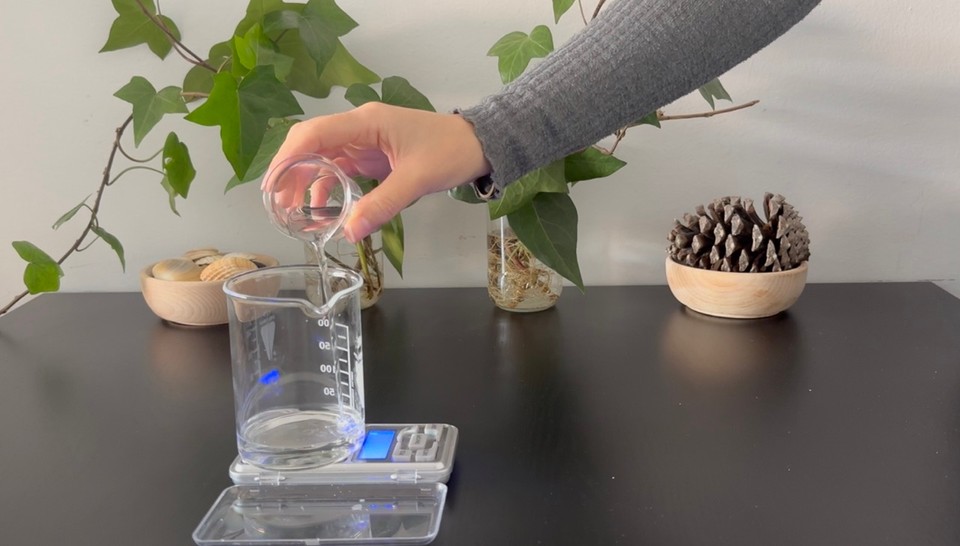
- Slowly sprinkle the Hyaluronic Acid powder on the water's surface without stirring. (If you stir it immediately, it can cause the particles to clump together).
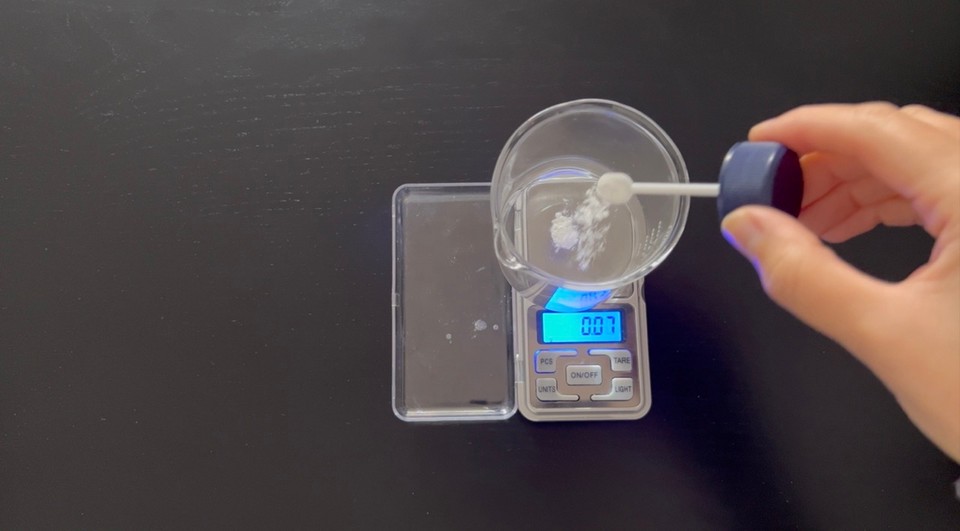
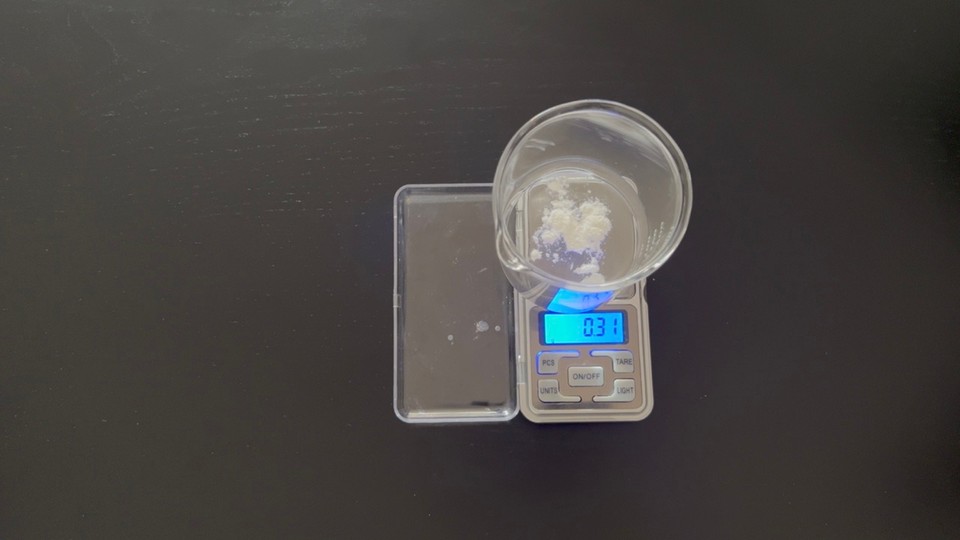
- Let the Hyaluronic Acid hydrate on its own. This could take several hours. You can leave it to hydrate overnight. During this time, the Hyaluronic Acid particles will slowly absorb water and swell, eventually dispersing throughout the water and resulting in a light gel-like consistency.

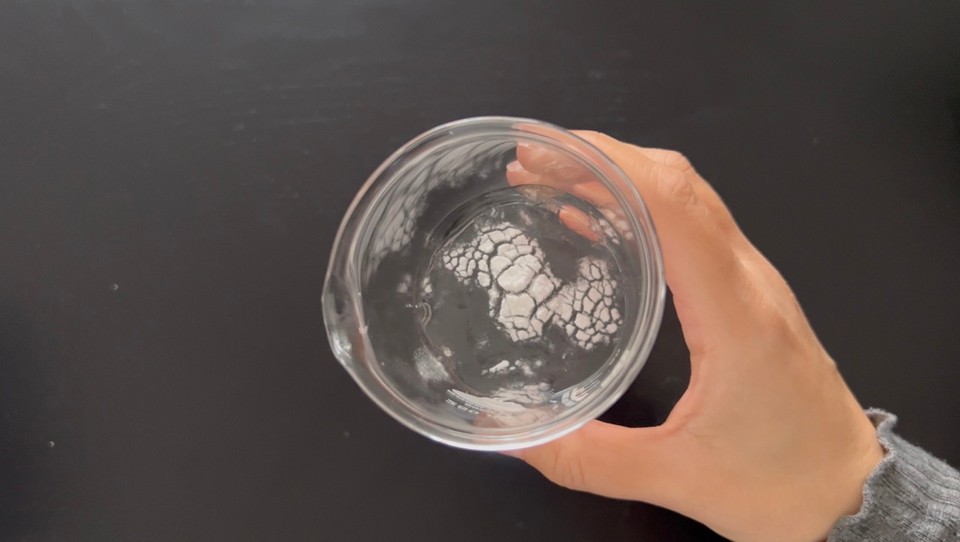
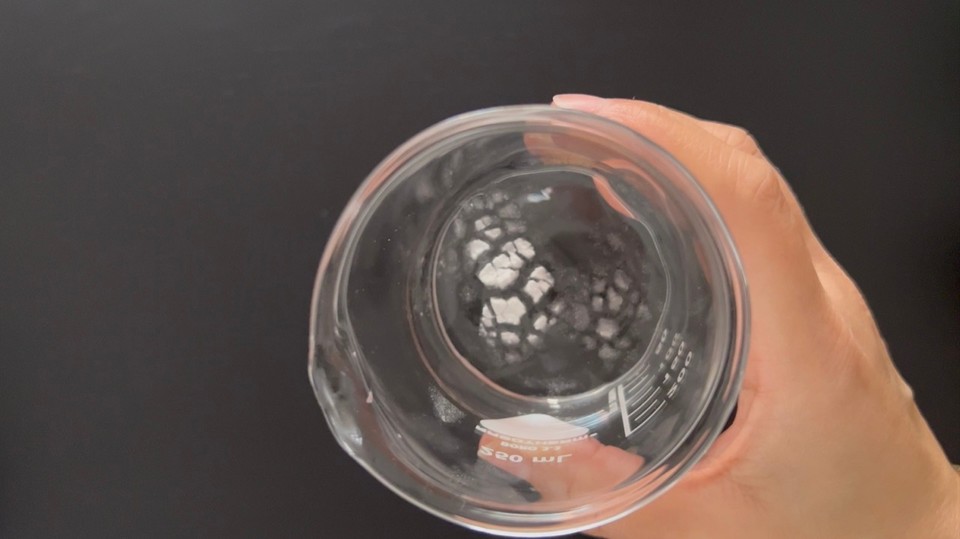

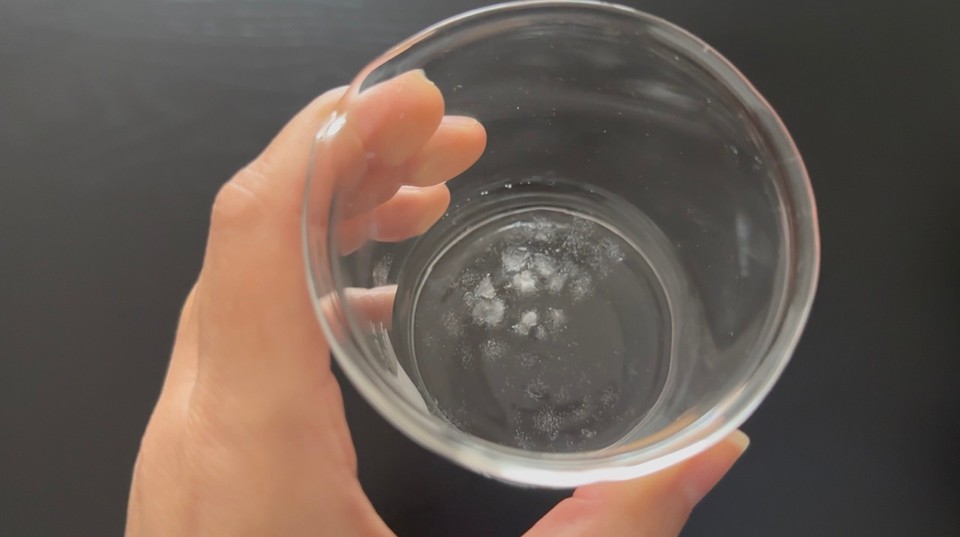
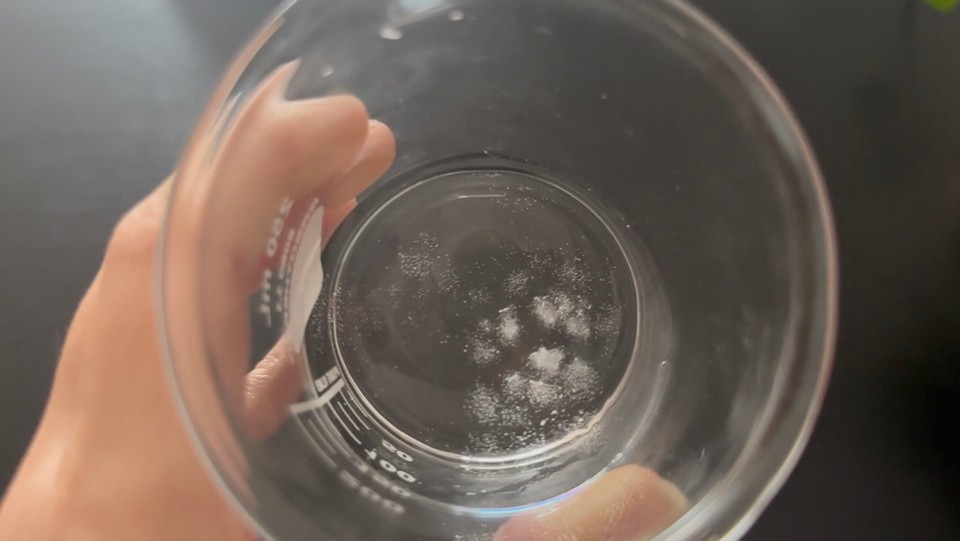
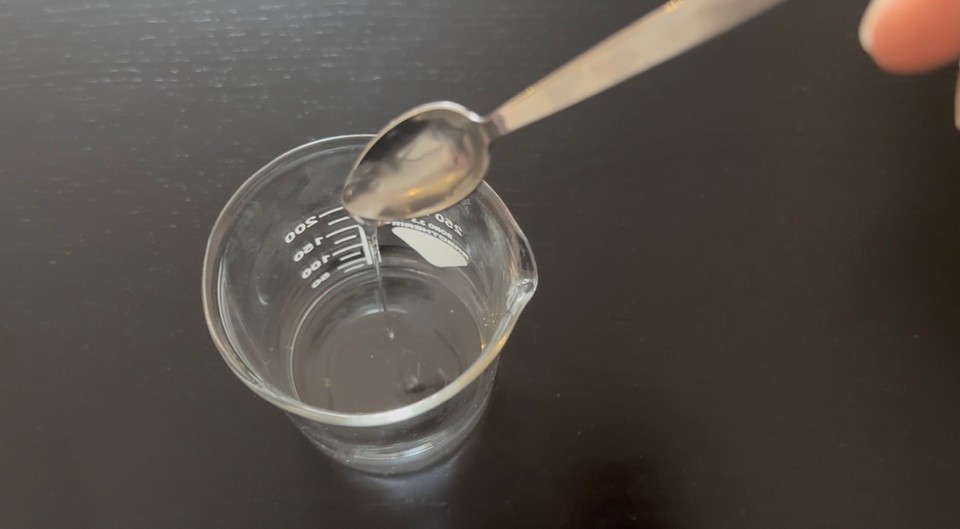
- After the Hyaluronic Acid has fully hydrated, gently stir the mixture to ensure a uniform consistency.

- Add the Niacinamide and stir to dissolve it.
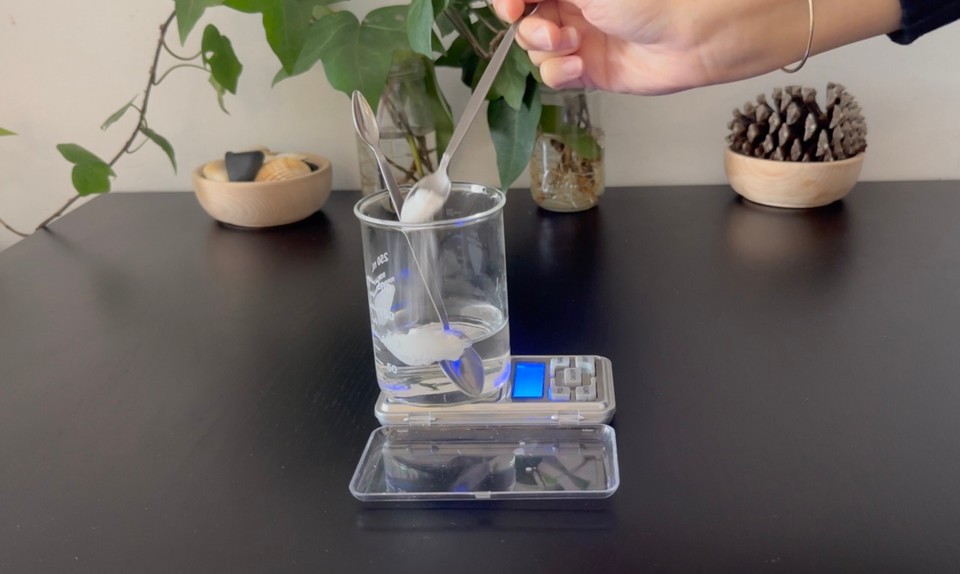
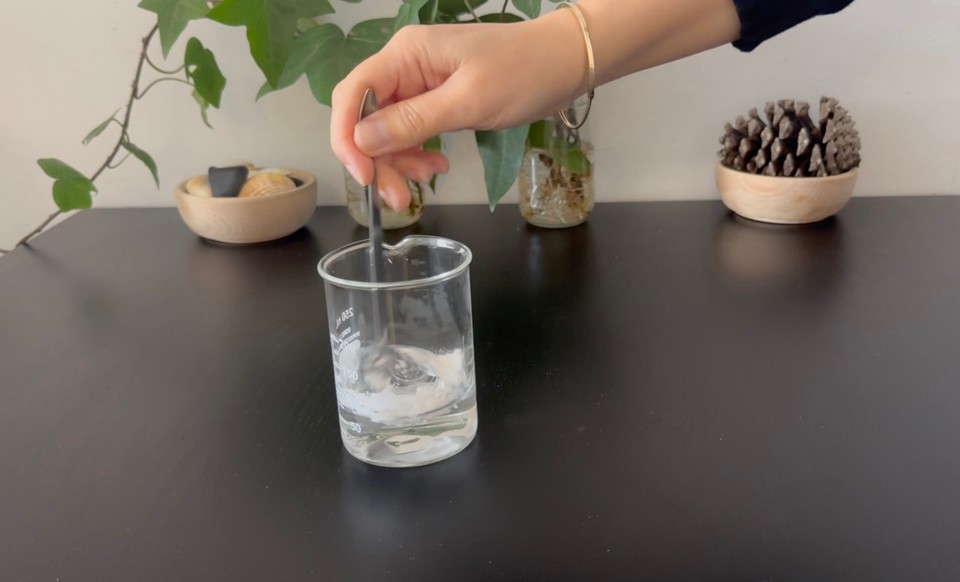
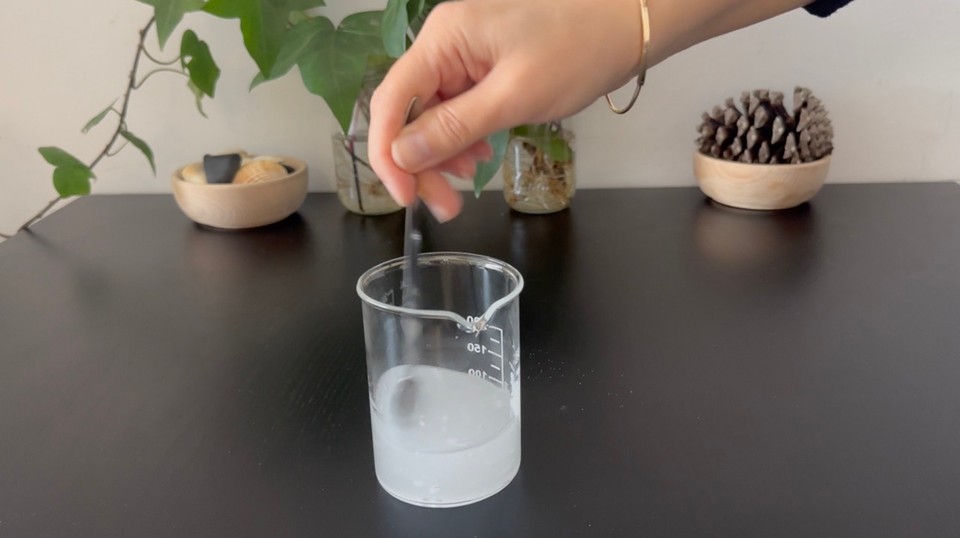
- Add the Glycerin, Pentylene glycol and Propanediol. Stir to combine.
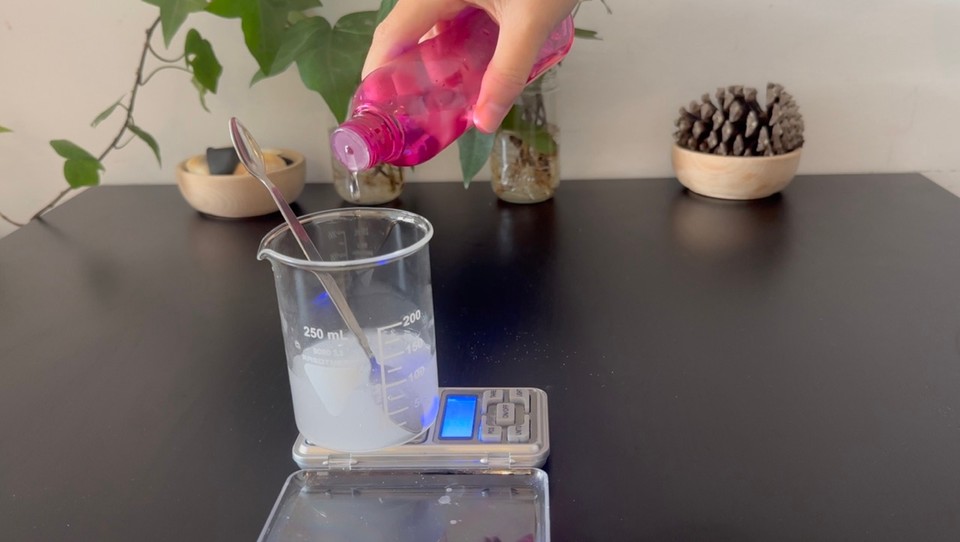



- Add the preservative and stir to combine.
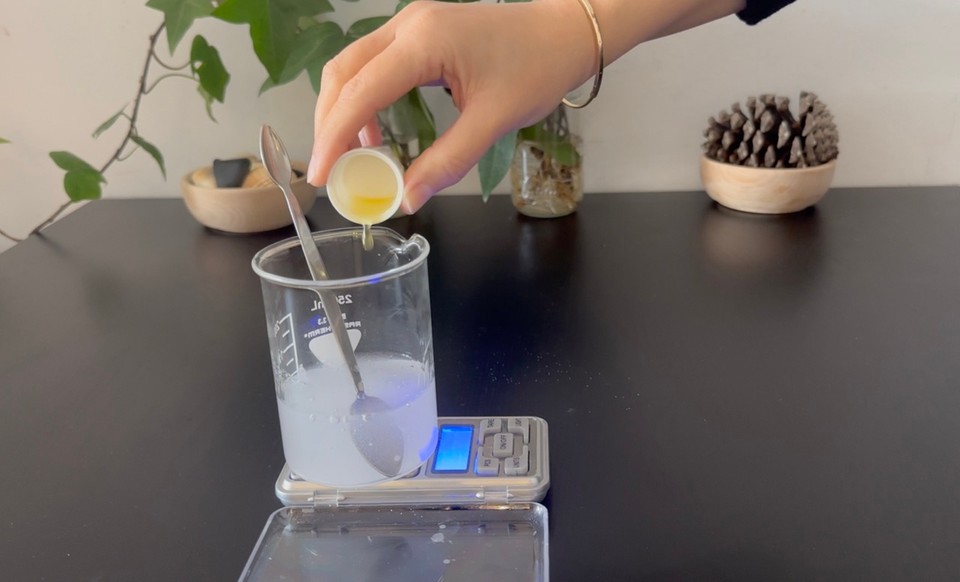
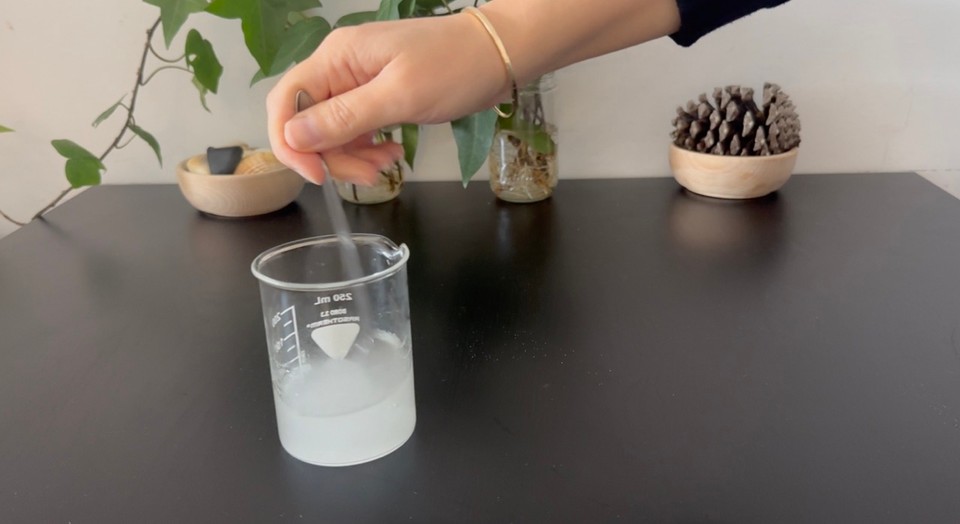
- Check the pH and adjust if necessary. The initial pH was more than 6 (the initial pH depends on the ingredients you use), I added a few drops of lactic acid 80% solution, stirred and rechecked the pH. I repeated this process until the pH was around 5. More about pH adjustments here.

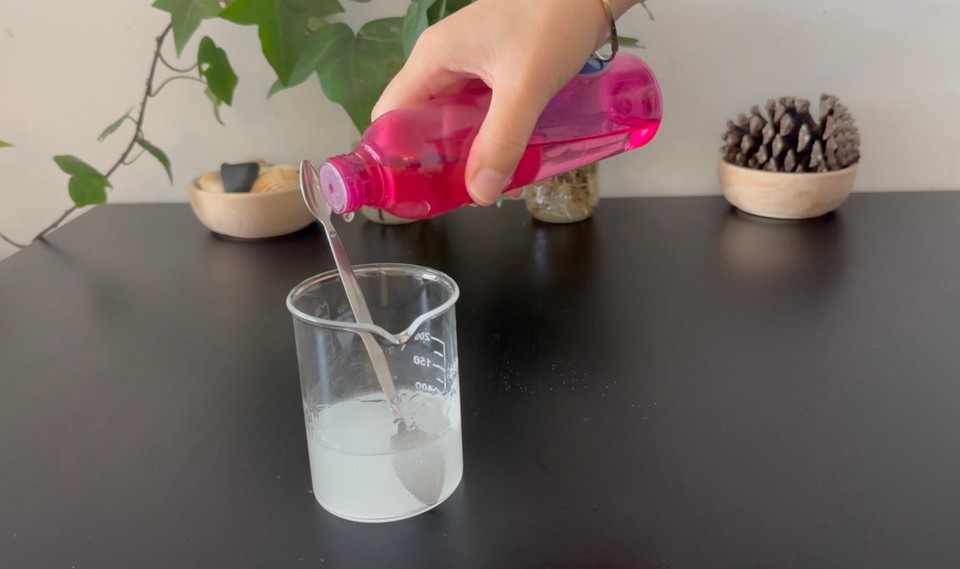

- Let the serum rest for 3-4 hours.
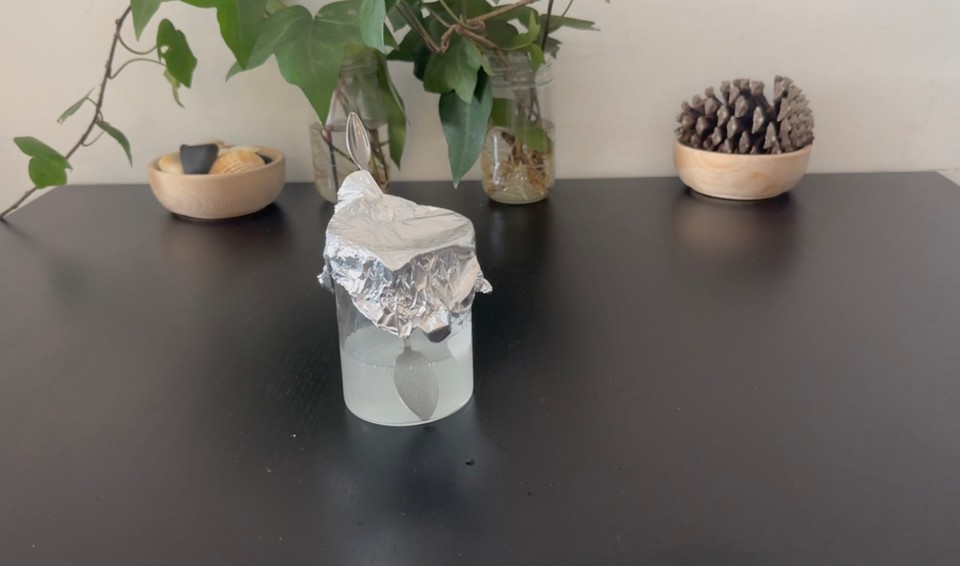
- Pour into a dropper bottle (usually, serums will be stored in small bottles of 20 ml or 30 ml) and enjoy your face serum.


Read more about niacinamide:
https://www.ulprospector.com/knowledge/294/pcc-benefits-niacinamide/
https://www.jaad.org/article/S0190-9622(04)02915-9/fulltext
https://www.ncbi.nlm.nih.gov/pmc/articles/PMC8389214/
https://pubmed.ncbi.nlm.nih.gov/12100180/
https://pubmed.ncbi.nlm.nih.gov/16766489/
